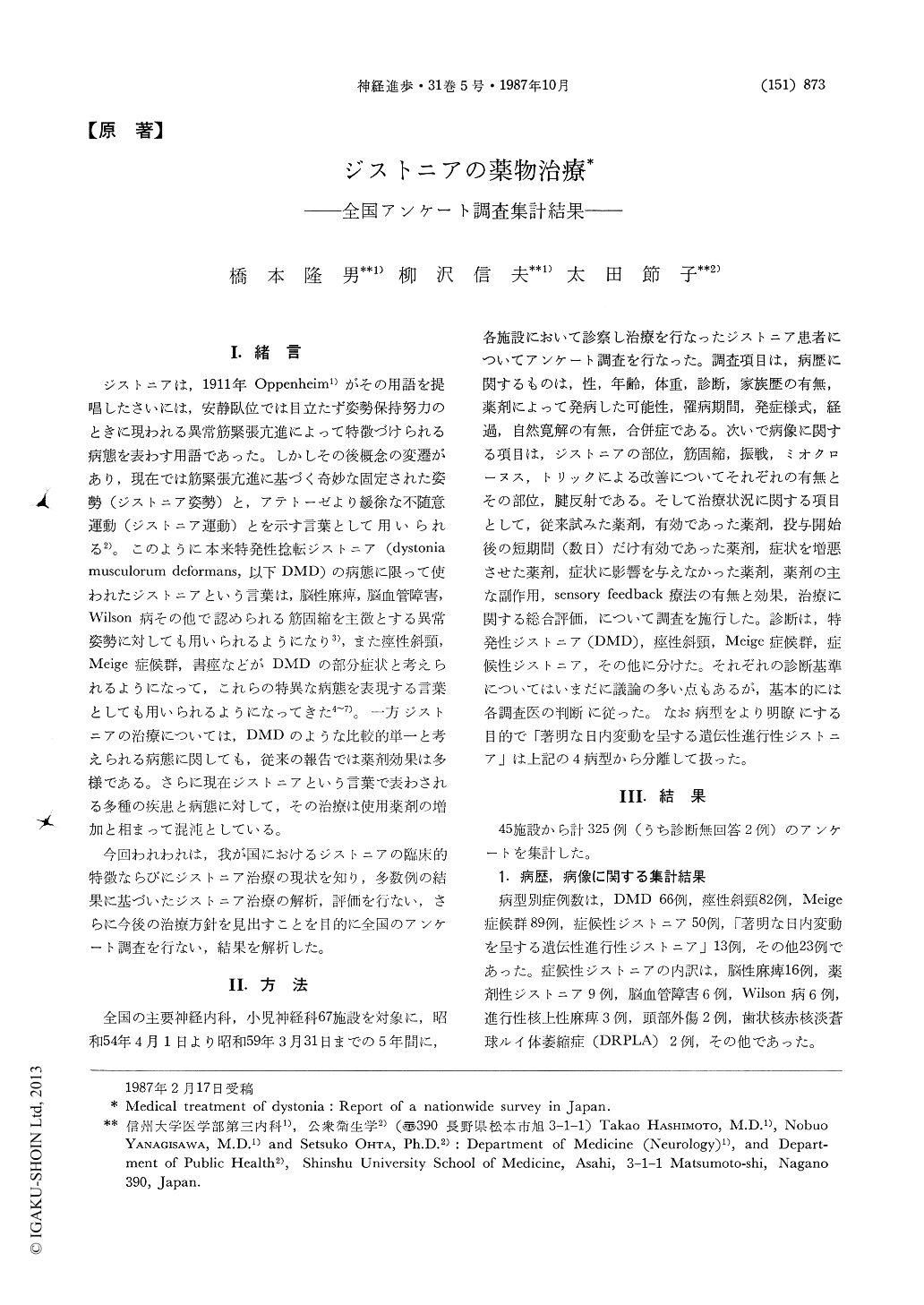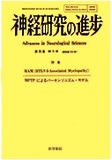Japanese
English
- 有料閲覧
- Abstract 文献概要
- 1ページ目 Look Inside
I.緒言
ジストニアは,1911年Oppenheim1)がその用語を提唱したさいには,安静臥位では目立たず姿勢保持努力のときに現われる異常筋緊張亢進によって特徴づけられる病態を表わす用語であった。しかしその後概念の変遷があり,現在では筋緊張亢進に基づく奇妙な固定された姿勢(ジストニア姿勢)と,アテトーゼより緩徐な不随意運動(ジストニア運動)とを示す言葉として用いられる2)。このように本来特発性捻転ジストニア(dystoniamusculorum deformans,以下DMD)の病態に限って使われたジストニアという言葉は,脳性麻痺,脳血管障害,Wilson病その他で認められる筋固縮を主徴とする異常姿勢に対しても用いられるようになり3),また痙性斜頸,Meige症候群,書痙などがDMDの部分症状と考えられるようになって,これらの特異な病態を表現する言葉としても用いられるようになってきた4〜7)。一方ジストニアの治療については,DMDのような比較的単一と考えられる病態に関しても,従来の報告では薬剤効果は多様である。さらに現在ジストニアという言葉で表わされる多種の疾患と病態に対して,その治療は使用薬剤の増加と相まって混沌としている。
A nationwide survey on the medical treatment of dystonia was undertaken in Japan. Questionaires about dystonia cases treated during the 5 years from 1979 to 1981 were sent to the 67 major institutions of neurology and pediatric neurology, and information was collected on 325 cases.
The cases included 66 with idiopathic torsion dystonia (DMD), 82 with spasmodic torticollis, 89 with Meige's syndrome, 50 with symptomatic dystonia and 36 with other diseases. In two cases no diagnosis was specified. Thirteen cases with hereditary progressive dystonia with marked diurnal fluctuation and some with drug-induced dystonia were included in the category of other diseases.

Copyright © 1987, Igaku-Shoin Ltd. All rights reserved.


